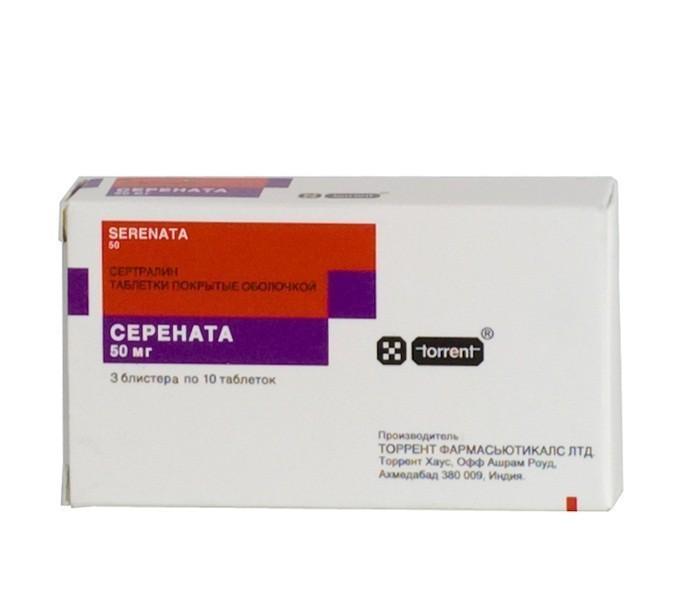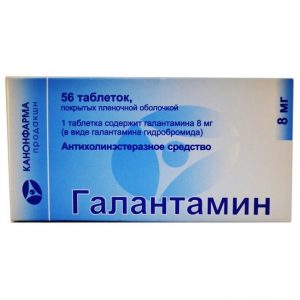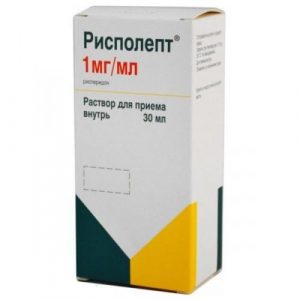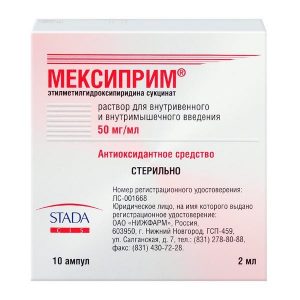Description
Latin name
SERENATA
Pharmacological action of
SERENATE – an antidepressant. Selective serotonin reuptake inhibitor (5-HT). It has a weak effect on the reuptake of norepinephrine and dopamine. At therapeutic doses, sertraline blocks the uptake of serotonin by human platelets. Sertraline does not have an affinity for muscarinic, serotonin, dopamine, adrenergic, histamine, GABA or benzodiazepine receptors. It does not have a stimulating, sedative or anticholinergic effect.
The antidepressant effect is noted towards the end of the second week of regular administration of sertraline, while the maximum effect is achieved only after 6 weeks.
Unlike tricyclic antidepressants, sertraline does not cause weight gain. Sertraline does not cause mental or physical drug dependence.
Indications
– depression of various etiologies (treatment and prevention)
– obsessive-compulsive disorder (OCD)
– panic disorder (with or without agoraphobia)
– post-traumatic stress disorder (PTSD).
Contraindications
– unstable epilepsy
– children under 6 years of age
– pregnancy
– lactation period
– combined use of sertraline and MAO inhibitors (when replacing one drug with another, you should refrain from taking antidepressants for 14 days) sertraline with tryptophan or fenfluramine
– hypersensitivity to the drug.
With caution, the drug should be used for organic diseases of the brain (including with mental retardation), manic conditions, epilepsy, liver and / or renal failure, weight loss.
Use during pregnancy and lactation
Adequate and strictly controlled clinical trials of the safety of the drug Serenata during pregnancy have not been conducted. Prescribing the drug to pregnant women is contraindicated.
Women of reproductive age who are expected to receive treatment with Serenate should use effective methods of contraception.
Sertraline is excreted in breast milk. There are no reliable data on the safety of sertraline during lactation. Therefore, if it is necessary to prescribe the drug, breastfeeding should be discontinued.
Composition
Sertraline
Excipients: microcrystalline cellulose, sodium carboxymethyl starch, calcium hydrogen phosphate dihydrate, hydroxypropyl cellulose, polysorbate, magnesium stearate.
Dosage and administration of
For adults with depression and OCD, the drug is prescribed in an initial dose of 50 mg 1 time / day. in the morning or evening. The daily dose can be gradually, not earlier, than a week later increase from 50 mg to a maximum daily dose of 200 mg.
In panic disorders and PTSD, the initial dose is 25 mg 1 time / day. in the morning or evening. After a week, you can increase the dose to 50 mg 1 time / day. And then gradually, no earlier than a week, the daily dose can be increased from 50 mg to a maximum daily dose of 200 mg.
A satisfactory therapeutic result is usually achieved after 7 days from the start of treatment. However, to achieve the full therapeutic effect, regular administration of the drug is required for 2-4 weeks. In the treatment of OCD, it may take 8-12 weeks to achieve a good result. The minimum dose that provides a therapeutic effect is retained in the future as a maintenance.
For children with OCD, the drug is prescribed depending on age. For children aged 6 to 12 years, the initial dose is 25 mg 1 time / day. in the morning or evening. After a week, the dose can be increased to 50 mg 1 time / day. For children and adolescents aged 12 to 17 years, the initial dose is 50 mg 1 time / day. In the morning or in the evening. The daily dose can be gradually increased, not earlier than in a week, from 50 mg to a maximum daily dose of 200 mg. To avoid overdose, it is necessary to take into account the smaller body weight in children compared with adults and with an increase in dose of more than 50 mg, careful monitoring of this category of patients is necessary and at the first signs of an overdose, cancel the drug.
In elderly patients, special dose adjustment is not required.
In severely impaired liver function, the dose should be reduced or the intervals between doses should be increased.
In patients with impaired renal function, a special dose selection is not required.
Side effects of the
From the digestive system: dry mouth, decreased appetite (rarely increased), up to anorexia, dyspeptic disorders (flatulence, nausea, vomiting, diarrhea), abdominal pain with prolonged use in 0.8% of cases – an asymptomatic increase in the activity of transaminases in the blood serum (enzyme activity normalizes when the drug is canceled).
From the side of the central nervous system and peripheral nervous system: drowsiness, headache, dizziness, tremor, insomnia, anxiety, agitation, hypomania, mania, impaired gait, weakness, extrapyramidal disorders, dyskinesias, tremors, convulsions, visual impairments were noted during sertraline treatment . Movement disorders were more often observed in patients with indications of their presence in the anamnesis or with the concomitant use of antipsychotic drugs.
From the endocrine system: ejaculation disorders, decreased libido, menstrual irregularities, hyperprolactinemia, galactorrhea.- transient hyponatremia (this side effect is associated with the syndrome of inadequate secretion of ADH).
Dermatological reactions: redness of the skin, skin rash rarely – erythema multiforme.
When discontinuing treatment: rarely – withdrawal syndrome: paresthesia, hyposthesia, symptoms of depression, hallucinations, aggressive reactions, psychomotor agitation, anxiety or symptoms of psychosis that cannot be distinguished from the symptoms of the underlying disease are possible.
Drug Interaction
With the simultaneous use of the drug Serenate and MAO inhibitors, both selectively acting (selegiline) and reversible type of action (moclobemide), serious complications, including serotonin syndrome, may develop. Similar complications, sometimes fatal, occur when prescribing MAO inhibitors against antidepressant treatment that suppresses neuronal capture of monoamines or immediately after their withdrawal. With the simultaneous use of selective inhibitors of neuronal serotonin capture and MAO inhibitors, there are: hyperthermia, rigidity, myoclonus, lability of the autonomic nervous system (rapid fluctuations in the parameters of the respiratory and cardiovascular systems), changes in mental status, including increased irritability, marked arousal, confusion, which in some cases can go into a delirious state or coma.
A significant increase in prothrombin time is observed with the combined administration of coumarin and sertraline (it is recommended to control prothrombin time at the start of treatment with Serenate and after its withdrawal).
The pharmacokinetic interaction of
Sertraline binds to plasma proteins. Therefore, it is necessary to consider the possibility of its interaction with other drugs that bind to proteins (eg, diazepam, tolbutamide and warfarin).
When administered with cimetidine, a significant decrease in sertraline clearance is observed. With prolonged treatment with sertraline at a dose of 50 mg / day in the case of simultaneous use, there is an increase in the plasma concentration of desipramine, which is metabolized with the participation of the CYP2D6 isoenzyme.
In vitro drug interaction studies have shown that metabolic processes involving CYP3A3 / 4 isoenzymes – beta-hydroxylation of endogenous cortisol and metabolism of carbamazepine and terfenadine – do not change with long-term administration to long-term administration. The plasma concentration of tolbutamide, phenytoin and warfarin does not change with long-term administration of sertraline at the same dose. So we can conclude that sertraline does not inhibit CYP2C9 isoenzyme activity.
Sertraline has no effect on the concentration of diazepam in the serum, indicating no CYP2C19 isoenzyme inhibition.
According to in vitro studies, sertraline has little or no effect on the CYP1A2 isoenzyme.
Lithium pharmacokinetics do not change when sertraline is administered concomitantly, however, in such cases, tremor is more common. Just like the administration of other selective inhibitors of serotonin reuptake, the co-administration of sertraline with drugs that affect serotonergic transmission (eg, lithium) requires extreme caution. There is no need for a washout period when one serotonin capture inhibitor is replaced with another. However, care must be taken when changing the course of treatment.
Co-administration of tryptophan or fenfluramine with sertraline should be avoided.
Sertraline causes minimal induction of microsomal liver enzymes. Simultaneous administration of sertraline and antipyrine at a dose of 200 mg leads to a significant decrease in T1 / 2 antipyrine, although this occurs in only 5% of observations.
When administered concurrently, sertraline does not alter the beta-blocker activity of atenolol.
No drug interaction was detected with sertraline 200 mg / day with glibenclamide or digoxin.
overdose
Symptoms: Severe symptoms of sertraline overdose have not been detected even with high doses. However, severe poisoning may occur when used with other drugs or ethanol. Overdose can cause serotonin syndrome with nausea, vomiting, drowsiness, tachycardia, agitation, dizziness, psychomotor agitation, diarrhea, sweating, myoclonus and hyperreflexia.
Treatment: There are no specific antidotes. Intensive supportive therapy and constant monitoring of vital body functions are required. Causing vomiting is not recommended. The introduction of activated carbon may be more effective than gastric lavage. It is necessary to maintain the airway. Sertraline has high Vd, so increasing diuresis, dialysis, hemoperfusion, or blood transfusions may be ineffective.
Storage conditions
At a temperature below 25 ° C
Expiration
2 Year
Deystvuyuschee substances
sertraline
Pharmacy leave
Po
Dosage form
Dosage form
tablets
Torrent, India




